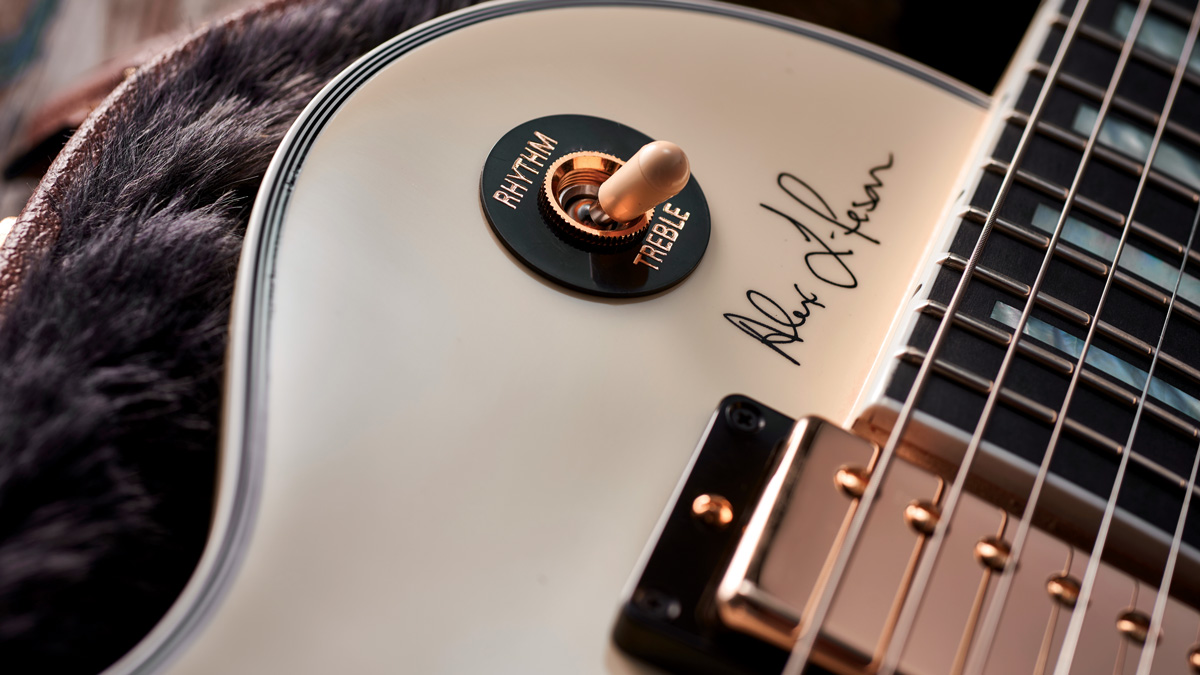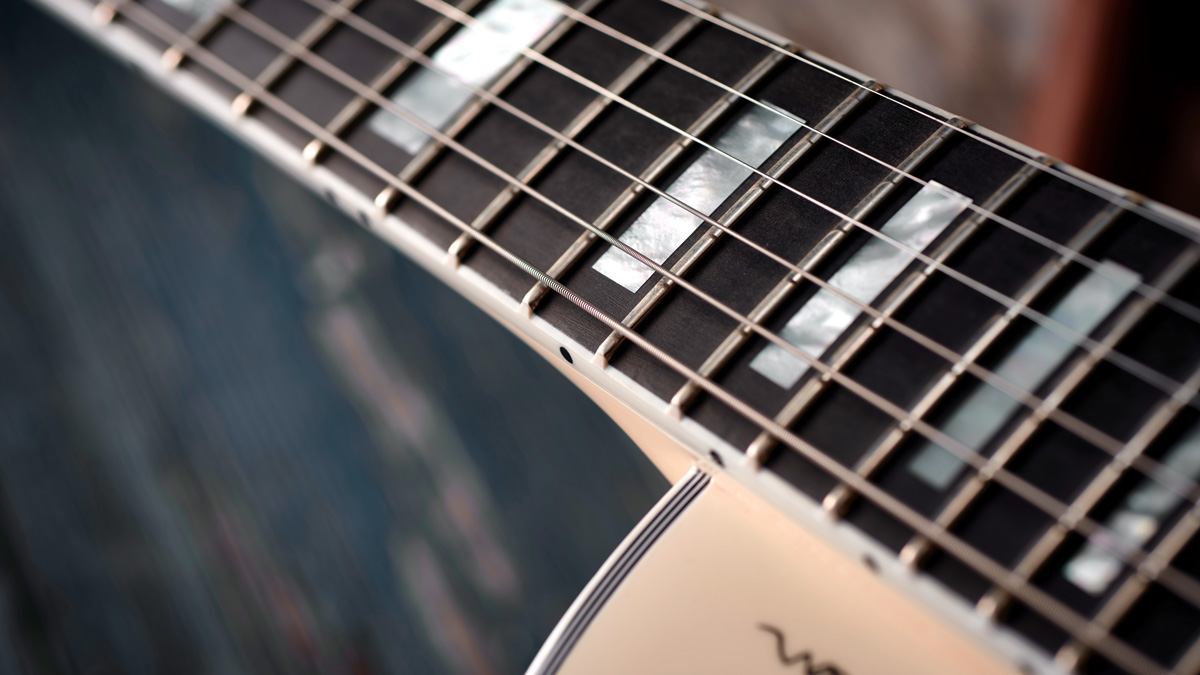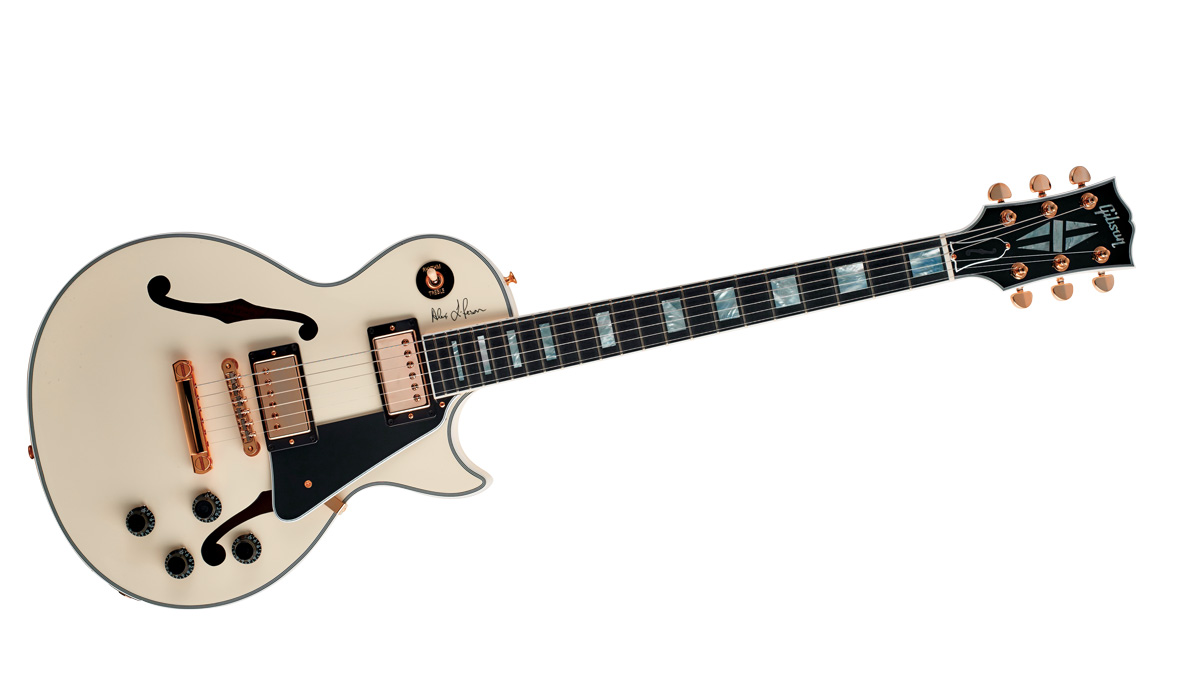MusicRadar Verdict
A signature model full of character at an appealing price.
Pros
- +
Very hollow-sounding semi in compact package.
- +
Handles volume better than ES-330.
Cons
- -
You might not like the Lifeson style, but don’t overlook the ES-LP!
MusicRadar's got your back
Aside from being a signature limited edition for 2017, in terms of construction, our review model also book-ends Gibson’s ES ‘thinline’ models from the original classic, the ES-335, which spawned the ES-355 and ES-345, up to the latest, the ES Les Paul.
Alex Lifeson’s latest signature uses the iconography of the Les Paul Custom but in semi-hollow ES LP style and is limited to a run of 200 pieces.
While it’s hard to second guess the price-points and style of Gibson’s often forward-looking USA production range, the Memphis division output has never failed to impress us with an eye firmly on the past.
Yet this guitar is not just about replicating the past: along with new design, Memphis is surprisingly cutting-edge, too, employing ‘thermally engineered’ woods - aka torrefication, a process for ‘ageing’ woods and a growing trend for both acoustic and electric makers.

Earlier this year, division head Mike Voltz indicated Memphis’s plans to use more of the same, suggesting torrefied mahogany for necks, for example, once the production process has been sorted, due to the more brittle nature of the timber after its heat treatment.
Ironically, this modernism is being used to try to nail more closely the weights and sonic response of older vintage pieces. Gibson’s certainly created a more vintage-like appearance with its VOS treatment where both the nitro-cellulose gloss finish is cut back to a lower-gloss lustre and hardware is aged - not distressed - to match. It’s not meant to fool anyone into thinking this is a real old guitar, but it certainly doesn’t look like those box-fresh ‘don’t touch me’ high-gloss pieces, either.
The Lifeson does have a standard gloss with shiny gold-plated parts, but still looks slightly old with a creamy hue (we suspect it will yellow more with time and use).

Construction-wise, the Lifeson uses a fairly emancipated centre block made from that torrefied mahogany and spruce bracing.
The Lifeson is slimmer than the recently-reviewed Freddie King and Tamio Okuda Gibsons by a whisker and, in lower positions, feels less rounded with more tapered shoulders.
Strapped on, the very slightly neck-heavy ES-Les Paul feels quite unique, albeit it in a good way. It feels like a proper guitar, for sure. It also feels like an old guitar that has been played. ‘Character’ is the keyword here; the sounds and feel created by this instrument that takes us back in time.
It’s not cheap, and there’s healthy competition from numerous brands, but there’s something in the Memphis water that makes its guitars rather unique with their old-school build that seems slightly time-warped.
Dave Burrluck is one of the world’s most experienced guitar journalists, who started writing back in the '80s for International Musician and Recording World, co-founded The Guitar Magazine and has been the Gear Reviews Editor of Guitarist magazine for the past two decades. Along the way, Dave has been the sole author of The PRS Guitar Book and The Player's Guide to Guitar Maintenance as well as contributing to numerous other books on the electric guitar. Dave is an active gigging and recording musician and still finds time to make, repair and mod guitars, not least for Guitarist’s The Mod Squad.
“A synthesizer that is both easy to use and fun to play whilst maintaining a decent degree of programming depth and flexibility”: PWM Mantis review
“I feel like that song had everything we needed to come back with”: Bring Me The Horizon’s Lee Malia on Shadow Moses, its riff and the secrets behind its tone, and why it was the right anthem at the right time
“I said, ‘Are we sure we can write a song about death?’”: The story of Mike + The Mechanics' classic No.1 The Living Years











